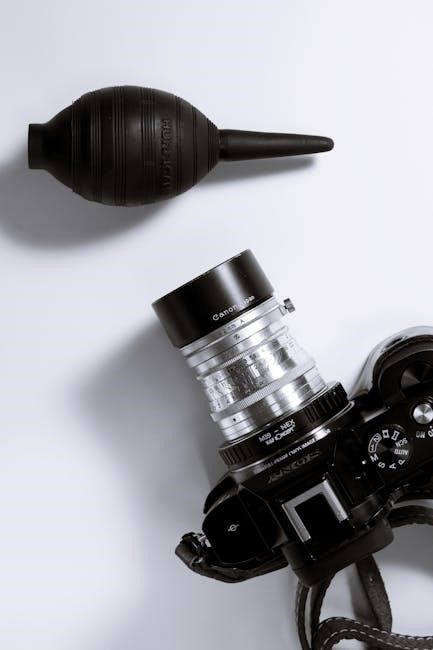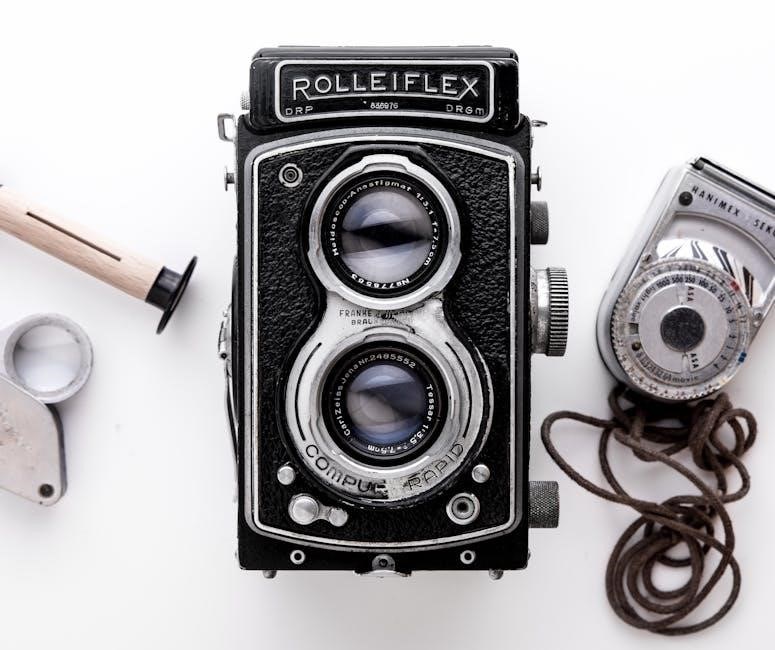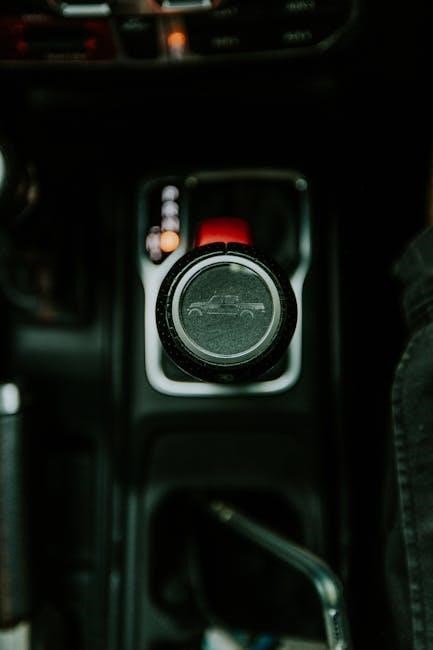
manual transmission to automatic conversion kit
Manual to automatic transmission conversion kits simplify switching from manual to automatic, offering adapter plates, control systems, and components for seamless transitions, enhancing drivability and resale value.
Overview of Transmission Conversion Kits
Transmission conversion kits provide a comprehensive solution for transitioning from manual to automatic transmissions. These kits typically include adapter plates, torque converters, and control systems. Popular brands like JEGS, Quick Time Bellhousing, and Trans Dapt offer high-quality components designed for seamless integration. Kits are tailored for specific engines and vehicle models, ensuring compatibility and optimal performance. They cater to various applications, from classic cars to modern vehicles, enabling drivers to enjoy the convenience of automatic shifting without compromising power or reliability. By addressing mechanical and electronic requirements, these kits streamline the conversion process, making it accessible for both enthusiasts and professionals. They are a cost-effective way to modernize drivetrains while preserving the vehicle’s original character and functionality.
Why Convert from Manual to Automatic?
Converting from manual to automatic transmission offers enhanced convenience, ease of use, and comfort. Automatic transmissions eliminate the need for manual shifting, reducing driver fatigue in heavy traffic or hilly terrain. This conversion is ideal for those who prefer a smoother, more relaxed driving experience. Additionally, it can improve resale value, as many buyers favor automatic vehicles for their simplicity. The conversion also opens up possibilities for modernizing older vehicles with advanced transmission technology, making them more appealing to a broader audience. Overall, it’s a practical choice for drivers seeking a hassle-free and comfortable driving experience while retaining their vehicle’s performance and character.
Key Benefits of Automatic Transmission Conversion
Converting to an automatic transmission provides numerous advantages, including improved drivability and reduced driver fatigue. Automatic transmissions eliminate the need for manual shifting, making city driving and stop-and-go traffic less stressful. This conversion also enhances comfort, as it allows drivers to focus more on the road without constant gear changes. Additionally, automatic transmissions can improve low-speed maneuverability and provide smoother acceleration, which is particularly beneficial for inexperienced drivers. Many modern automatic transmissions also offer better fuel efficiency and quieter operation compared to older manual setups. Furthermore, the conversion can increase a vehicle’s resale value, as automatic transmissions are often preferred by a larger portion of the market.

Understanding the Conversion Process
Converting a manual to automatic transmission involves replacing the manual system with an automatic setup, including adapter plates, control systems, and components for a smooth transition.
What Does a Manual to Automatic Conversion Kit Include?
A manual to automatic conversion kit typically includes a new automatic transmission, adapter plates for engine compatibility, control systems, and necessary components for a seamless swap.
Popular Brands and Suppliers of Conversion Kits
Leading brands like JEGS, Speedway Motors, and Modern Driveline offer high-quality conversion kits. JEGS provides adapter plates and swap kits from top brands such as Quick Time Bellhousing and Trans Dapt. Modern Driveline specializes in TREMEC solutions for enhanced performance. American Powertrain is another trusted supplier, offering comprehensive kits for various applications. Additionally, Shiftworks and CK Performance Products are known for their innovative solutions. These brands ensure compatibility and reliability, making the conversion process smoother. Their kits are designed to meet specific vehicle needs, whether for classic cars or modern drivetrains. Choosing a reputable supplier is crucial for a successful and durable conversion.
Off-the-Shelf Adapters vs. Custom Solutions
Off-the-shelf adapters offer a cost-effective and time-saving solution for transmission conversions, providing pre-engineered components for common applications. These kits are readily available from suppliers like JEGS and Speedway Motors, ensuring compatibility with popular vehicle models. Custom solutions, while more expensive, allow for tailored modifications to fit unique or rare vehicles. They often involve bespoke adapter plates and specialized engineering. Off-the-shelf options are ideal for DIY enthusiasts, while custom solutions cater to those with specific needs or high-performance requirements. Balancing budget, vehicle specifics, and desired outcomes helps determine the best choice between these options for a successful conversion.

Technical Considerations
Transmission conversion requires careful consideration of vehicle compatibility, engine type, and electronic components. Adapter plates, sensors, and control systems must align for smooth operation and reliability;
Compatibility of Conversion Kits with Different Vehicles
Ensuring compatibility is crucial when selecting a manual to automatic transmission conversion kit. These kits are designed to work with specific vehicle makes, models, and engine types. Popular brands like JEGS and Speedway Motors offer a variety of kits tailored for different applications, such as the 1968-72 Chevelle or Ford engines. Off-the-shelf adapters are readily available for common vehicles, while custom solutions can be crafted for less typical or unique setups. Compatibility also extends to the vehicle’s existing drivetrain components, including the engine, driveshaft, and axles. Proper alignment and fitment are essential to avoid mechanical issues and ensure smooth operation post-conversion.
Transmission Adapter Plates and Swap Kits
Transmission adapter plates and swap kits are essential for ensuring compatibility during a manual to automatic conversion. These plates and kits are designed to bridge the engine and transmission, facilitating a seamless installation. Popular brands like Quick Time Bellhousing, Trans Dapt, and TCI offer high-quality adapter plates tailored for specific vehicles, such as Ford, Chevrolet, and Mopar applications. Swap kits often include bellhousing adapters, flex plates, and other hardware to align the automatic transmission with the engine. These components are engineered to fit specific engine and transmission combinations, ensuring proper alignment and functionality. By using these adapters, enthusiasts can avoid costly custom fabrication, making the conversion process more accessible and efficient.

Electronic and Mechanical Components Involved
The conversion from manual to automatic transmission involves a blend of electronic and mechanical components. Key elements include the automatic transmission itself, adapter plates, and torque converters. Additionally, electronic control modules, wiring harnesses, and sensors are crucial for modern automatic transmissions to function properly. These systems ensure smooth shifting and optimal performance. Mechanical components like the flex plate and bellhousing adapter are essential for proper engine-transmission alignment. Together, these parts form a comprehensive system that enables the vehicle to operate efficiently with an automatic transmission. Proper installation and synchronization of these components are vital for a successful conversion, ensuring reliability and drivability.

Installation and Maintenance
Installation requires mechanical expertise, while regular maintenance ensures optimal performance. Professional installation is recommended, but DIY kits are available for skilled enthusiasts, with clear instructions provided.
Step-by-Step Installation Guide
Converting a manual transmission to automatic requires precision and mechanical expertise. Start by assessing your vehicle’s compatibility with the chosen conversion kit. Gather all necessary tools, including a transmission jack, wrenches, and torque converters. Begin by disconnecting the battery and draining fluids before removing the manual transmission. Install the automatic transmission, ensuring proper alignment with the engine. Connect the torque converter and adapter plate, then reattach the driveshaft. Reinstall the transmission pan and refill fluids. Finally, reconnect electrical components and test the system. Always follow the manufacturer’s instructions and consider professional assistance if unsure. Proper installation ensures smooth operation and longevity of the transmission.
Challenges and Potential Issues During Installation
Installing a manual to automatic transmission conversion kit presents several challenges; Compatibility issues between the engine and transmission require precise alignment, often necessitating custom adapters or plates. Mechanical aptitude is crucial, as improper installation can lead to hydraulic leaks or electrical faults. The process is time-intensive, typically requiring 10-11 hours, depending on the vehicle’s condition. Additionally, the cost can be prohibitive, with estimates ranging from Rs 80,000 to over $1,000. Technical complexities, such as configuring electronic controls or adjusting gear ratios, may arise, especially with modern engines. Without professional expertise, drivers risk improper shifting or reduced performance. These factors underscore the importance of thorough planning and skilled execution to ensure a successful conversion.

Maintenance Tips for Converted Transmissions

Regular maintenance is crucial for ensuring the longevity and performance of a converted transmission. Always use the recommended transmission fluid, as specified by the manufacturer, and replace the filter periodically to prevent contamination. Inspect the cooling lines and connections to avoid overheating, which can damage the transmission; Check the electronic control systems for any error codes using a diagnostic scanner and update the firmware if necessary. Avoid extreme driving conditions that may strain the transmission, such as rapid acceleration or towing heavy loads. Schedule regular inspections with a professional to identify potential issues early. Proper care ensures smooth operation and prevents costly repairs, keeping your converted transmission reliable for years to come.

Cost and Practicality
Conversion costs range from a few hundred to several thousand dollars, depending on the kit and labor. Economic considerations include resale value and convenience versus investment.
Estimated Costs of Manual to Automatic Conversion
The cost of converting a manual to an automatic transmission varies widely, ranging from a few hundred to several thousand dollars. Basic conversion kits can start around $500-$1,000, while more complex setups, including advanced control systems or custom adapters, can exceed $3,000. Labor costs for professional installation add to the expense, often ranging from $1,000 to $3,000, depending on the complexity and the mechanic’s rates. Additionally, factors like the vehicle’s make, model, and the type of transmission being installed influence the final price. For example, converting a classic car or integrating modern electronic components may incur higher costs. Overall, the total investment can range from $2,000 to $6,000 or more, making it a significant financial decision.
Economic Considerations and Resale Value
Converting a manual transmission to automatic can impact a vehicle’s resale value, often positively, as automatics appeal to a broader audience. The cost of conversion may be offset by increased demand, particularly in urban areas where automatics are preferred. However, for niche markets, such as sports or classic cars, retaining a manual transmission might preserve or even enhance value. Labor costs and the price of conversion kits can influence profitability. Vehicles with high mileage or lower demand may not recover the investment. It’s crucial to weigh the conversion cost against potential resale gains, ensuring the decision aligns with the vehicle’s intended use and target market.
Professional vs. DIY Installation
Professional installation of a manual to automatic transmission conversion kit is often recommended due to the complexity of the process. DIY installation requires expertise and specialized tools, which may not be feasible for most car owners. While DIY can be cost-effective, it risks causing irreparable damage to the vehicle if done incorrectly. Professional mechanics ensure proper alignment and integration of components. However, for experienced enthusiasts, detailed guides and support from brands like JEGS and TCI can make DIY feasible. The choice depends on the individual’s technical skills and confidence in handling intricate mechanical work. Always prioritize safety and reliability when deciding the installation method.